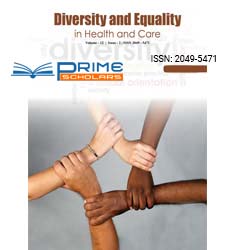Commentary - (2023) Volume 20, Issue 1
The Effects of Maternal Obesity on Fetal Development
Mariana Bocca Nejm*
Mariana Bocca Nejm, Netherlands
*Correspondence:
Mariana Bocca Nejm,
Mariana Bocca Nejm,
Netherlands,
Email:
Received: 31-Jan-2023, Manuscript No. IPDEHC-23-15978;
Editor assigned: 02-Feb-2023, Pre QC No. IPDEHC-23-15978 (PQ);
Reviewed: 16-Feb-2023, QC No. IPDEHC-23-15978;
Revised: 21-Feb-2023, Manuscript No. IPDEHC-23-15978 (R);
Published:
28-Feb-2023, DOI: 10.21767/2049-5471.20.01.07
INTRODUCTION
Creature models of weight by electrolytic injury of the ventromedial
hypothalamic core (VMH) have been broadly portrayed
in the writing. True to form, in the current review, body weight
(≈ 102%), food utilization (≈ 13%), and muscle to fat ratio content
(≈ 76%) were higher in creatures than in control creatures
during the assessment time frame (following 30 days medical
procedure), you were thought of as stout. Since there is no
tremendous contrast in the level of energy consumed during
growth, the expanded admission of metabolic energy showed
by corpulent creatures reflects expanded food consumption
and the absorptive limit of these creatures isn’t compromised.
Pigging out is a sign of trial models of stoutness initiated by
VMH electrolytic injuries. Notwithstanding their high caloric
admission, large creatures had expanded energy consumption
and in this way showed comparative additions in body weight
and body energy as control creatures. It is notable that pigging
out for the most part prompts expanded energy use as a
characteristic instrument to keep up with energy equilibrium,
and this is called diet-incited thermogenesis. In any case, stout
creatures showed comparable degrees of energy consumption
as controls. They showed a lower level of energy gain, logical
because of a critical decrease in all out taking care of effectiveness.
Comparable outcomes have been recently gotten in nonfat,
diet-confined pregnant rodents. Changes in body creation
in the current review were because of stoutness and dietary
pay. True to form, heftiness prompts expanded fat substance
previously and during pregnancy. The diminished pace of fat
addition in large creatures previously and toward the finish of
pregnancy is because of a characteristic expansion in fat statement
in control creatures during this period.
Description
It is notable that dietary limitation builds preparation of fat sources and increments body water content, bringing about a
reduction in muscle versus fat. True to form, stout pair-took
care of (OBPF) creatures had expanded cadaver dampness
content and diminished fat substance contrasted with fat (OB)
creatures. Shockingly, the fat substance of OBPF creatures was
lower than that of control creatures, which might make sense
of the lower energy procurement saw in these creatures. Reliable
with the weakened leptin and raised T3 levels displayed
by OBPF creatures contrasted with both. Corpulence normally
prompts raised insulin levels, as displayed in different test models.
Be that as it may, our outcomes showed no huge contrasts
in plasma insulin and glucose levels. Essentially, no distinctions
in lipid profiles were noticed, with the exception of HDL from
OB pregnant rodents. This was lower than the control, true
to form. Evidently, her HDL levels in OBPF creatures were like
those in her OB bunch, so dietary pay became worse.
Conclusion
They tracked down no massive contrasts between bunches
regarding plasma glucose, cholesterol, and fatty oils. Different
examinations in rodents propose protection from creating hypercholesterolemia
except if took care of elevated cholesterol,
hyper-lipidemic diet. The writing is questionable in regards
to the heftiness reflex of posterity moms. A few examinations
show that fat ladies are bound to have the biggest placentas
and children, while others show no adjustment of neonatal
weight or intrauterine development limitation upon entering
the world. In the on-going review, neonatal examination
showed no distinctions in number, weight, and body energy between
Gathering C and OB. This perception is possible because
of maternal endeavours to shield posterity from metabolic adjustments.
It might likewise be legitimate by the comparability
of adolescent protein and lipid content.
Citation: Nejm MB (2023) The Effects of Maternal Obesity on Fetal Development. Divers Equal Health Care. 20:07.
Copyright: © 2023 Nejm MB. This is an open-access article distributed under the terms of the Creative Commons Attribution
License, which permits unrestricted use, distribution, and reproduction in any medium, provided the original author and source
are credited.

